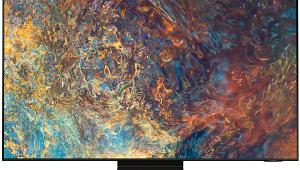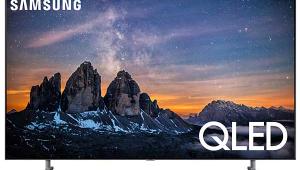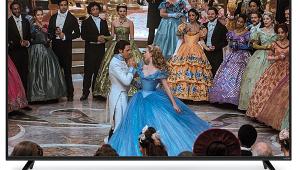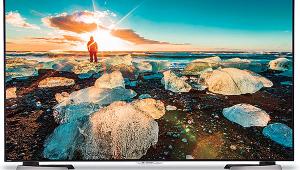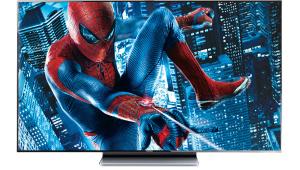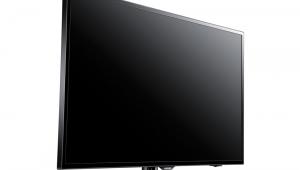Vizio XVT553SV LCD HDTV Page 3
Side by Side
To better sort out the Vizio’s picture quality, I had the opportunity to compare it directly with the Panasonic VIERA TC-P50VT25 plasma [Home Theater, September 2010]. Apart from the best and priciest LED local-dimming LCD sets we’ve tested, the Panasonic TC-P50VT25 plasma has the best black level of any currently available flat-panel HDTV we’ve tested—of any technology.
 At $2,600 and 50 inches, the Panasonic is smaller and more expensive than the Vizio. To get a comparable size in the Panasonic VT25 line, you’ll pay $3,000 for the 58inch TC-P58VT25, which we have not tested. The VT25 line also has 3D playback, which wasn’t relevant to this comparison.
At $2,600 and 50 inches, the Panasonic is smaller and more expensive than the Vizio. To get a comparable size in the Panasonic VT25 line, you’ll pay $3,000 for the 58inch TC-P58VT25, which we have not tested. The VT25 line also has 3D playback, which wasn’t relevant to this comparison.
The two sets were directly comparable in color, though not identical. The Vizio’s slightly more natural fleshtones stood out against more reddish faces on the Panasonic. The Vizio was a little sharper, but this may have been at least partly due to its larger screen as viewed from the same distance (about 8 feet). Neither set lacked for detail.
When displaying a full-screen black image, the Panasonic’s screen was a dark gray compared with the Vizio’s completely black picture. In the opening of Stargate: Continuum, the Vizio also produced more convincing star fields when nothing else was on the screen (like a bright planet) that might otherwise raise the black level in the manner noted earlier. In fact, the Vizio revealed more stars than I’ve seen from any other display—and there were no local-dimming halos around any of them. The Panasonic looked good on this test, but the Vizio clearly did it one better.
Both sets handled most of my other favorite dark test scenes well. But as the number of bright highlights against otherwise black backgrounds increased, the Panasonic pulled slightly ahead of the Vizio. The same was true of the black bars on 2.35:1 or 4:3 material. When present, they were about equal on both sets in dark and mid-brightness scenes. But on brighter scenes, they nearly disappeared into the Panasonic screen’s black frame, while they were still clearly visible on the Vizio.
I made these observations in a fully darkened room, or with dim lighting behind the screen. With some room light in front of the screen (but not shining directly onto it), the Vizio’s blacks looked noticeably deeper than the Panasonic’s on virtually all of my black-level test material. With the two sets off, the Vizio’s screen is darker, which likely contributes to its superior subjective black levels in this situation.
Last, but hardly least, the Vizio’s off-axis performance was superior to all the LCD sets we’ve tested recently apart from two LG local dimmers: the 47LX9500 (3D) and the 47LE8500 (2D). It’s no coincidence that both LGs and the Vizio use In Plane Switching (IPS) LCD panels, which offer better off-axis viewing than the types of LCDs that most other manufacturers use. The off-axis benefits of IPS come at the price of inherently inferior contrast, a problem that’s made to order for an LED local-dimming solution.
Conclusions
The Vizio’s black-level performance falls just short of what the best—and more expensive—local-dimming sets have achieved. But the Vizio’s black level and shadow detail are nevertheless so good that I can’t imagine any buyer, short of those willing to pay much more, being unhappy with the result. In other areas—color, resolution, video processing, and Internet features—it’s hard to fault. What you get in the Vizio XVT553SV is a big screen with solid all-around performance at a more than fair price.

